#ukrainian tradition celebrations
Text
Keeping the Past Alive: A Guide to the Top 10 Essential Ukrainian Traditions
Experience the heart and soul of Ukraine through 10 fascinating traditions! From festive celebrations to mouth-watering dishes, discover the country's rich cultural heritage. #UkrainianTraditions #CulturalHeritage #Travel
Ukraine’s rich cultural heritage and traditions are a testament to its long history and unique folklore. From Easter to Independence Day, Ukrainians celebrate various holidays and customs that reflect the country’s agricultural roots, religious beliefs, and national identity. This article will explore ten Ukrainian traditions that every national follows.
Easter Easter is one of the most…
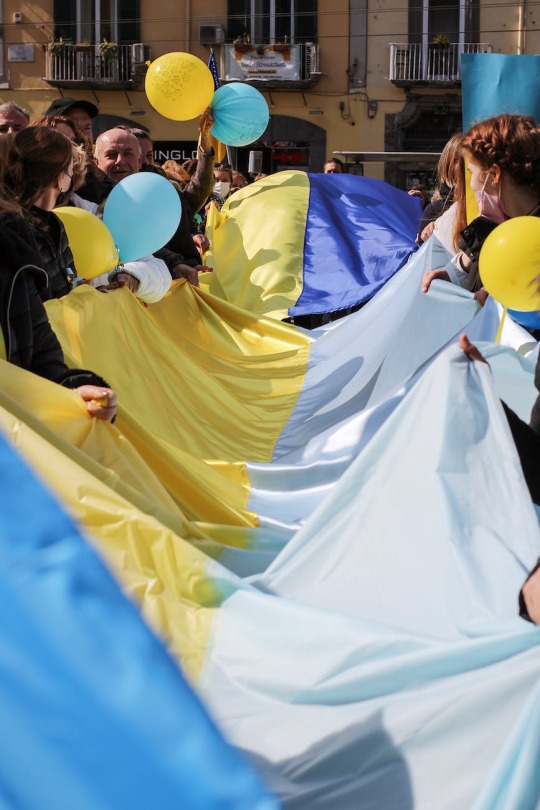
View On WordPress
#autobiography#borsch#Christmas in Ukraine#culture#friends#history#memoir#ukraine#ukraine traditions#Ukrainian culture#ukrainian orphanage#ukrainian tradition celebrations#ukrainian traditions#varenyky#vitaly#vitaly book#vitaly life
0 notes
Text

#digitalart#aiart#ukrainian culture#joyous celebration#festive meal#family gathering#art#ukraine#ukrainians#ai#traditional dishes
1 note
·
View note
Text

#digitalart#diversity#unity#ukrainians#art#traditional costumes#ai#celebration#aiart#ukraine#ukrainian culture
1 note
·
View note
Text

#ai#cultural heritage#ukrainian#digitalart#traditional#art#ukrainians#ukraine#aiart#community#celebration
1 note
·
View note
Text

#aiart#heritage celebration#art#ukraine#digitalart#ukrainians#historical symbols#national pride#ukrainian culture#traditional clothing#ai
0 notes
Photo


Andrew Stasiuk, the Warsaw-born in 1960 prose author and essayist, poet, playwright, and publicist, is a contemporary creator internationally acclaimed by the critics and by the public. On 11 November 2022 in Poznan, he performed in public with the Ukrainian folk-rock band Haydamaky (“Mickiewicz - Stasiuk - Haydamaky”- 2018 Album on disc in Polish, Ukrainian, and Crimean Tatar). Notable works: “The Walls of Hebron”, “White Raven”, “Tales of Galicia”, and “Travelling to Babadag”. The essays describe the reality of Eastern Europe and its relationship with the West.
https://www.flickr.com/photos/jjspychala/52762700378/
#Ukrainian folk-rock#polish-ukrainian relations#acclaimed#album#artistic#attractions#band#celebration#creator#poetry on stage#patriotic person#evening star#traditional music#sonnets#ska#show#rock#reggae#prose writer#cultural#folk rock#haydamaky#dub#musician#musical interpretation#outdoor#patriot#famous#star#literary-musical
1 note
·
View note
Photo

Things We Care About
Well, Tumblr, 2022 was another big year for speaking up and supporting each other. In the past year, you took action, turned art into activism, and made your voices heard, often in support of others. We’ve analyzed your top tags and posts to determine what mattered to you in the last year.
When Ukraine was invaded, you showed your support. You continue to #stand with Ukraine, create for Ukraine, and honor Ukrainian artists caught in the crossfires.
Throughout the year, you shared many messages of body positivity and encouragement, held 5,879,971 private exchanges with @kokobot (yes, you and kokobot rlly r bestiez), and sent an inconceivable amount of anonymous, personalized messages of reassurance to each other.
You celebrated Pride with plenty of wholesome artistic offerings and showed solidarity with your peers all over the world. You stood up against the Don’t Say Gay bill in Florida and informed each other on how to vote against trans-exclusionary policies across America. When Rebel Wilson and Kit Conner were both pressured into coming out, you supported them, commiserated with them, and came to the defense of anyone who's ever been pressured to do so.
When Mahsa Amini was killed, you spoke out and posted in support of protests in Iran, learning about and spreading awareness of what women, girls, and protestors endure in the name of tradition in Iran.
When Roe v. Wade was overturned, you shared countless resources for those affected by reproductive rights infringement in the US, again turning to art as a means to share stories and ignite action. You commemorated the victims of the Uvalde shooting, saying enough is enough when it comes to gun-related violence in America. You turned your rage into art that inspires and nudged others to make their voices heard at the US polls.
You reminded users that the “civil rights movement isn’t as “ancient” as we’re taught in class,” that Black lives still matter, and always will matter. You celebrated Black Joy and Black Excellence, illuminating stories of resilience in the face of racial injustice.
You celebrated your Indigenous culture and took a stand for the preservation of Indigenous lands.
You continued to be planet-conscious by sharing ideas, resources, and knowledge of mending and making, and celebrated conservation efforts along the way.
And finally, under the continued stresses of COVID, you looked to the future with resilience, turning pain and uncertainty into hope and connection.
And that’s definitely something to be proud of. What will you stand for in 2023?
3K notes
·
View notes
Text

Boris Kustodiev (1878-1927)
"Winter. Maslenitsa festivities" (1919)
Maslenitsa, also known as Butter Lady, Butter Week, Crepe week, or Cheesefare Week, is an Eastern Slavic religious and folk holiday which has retained a number of elements of Slavic mythology in its ritual. It is celebrated during the last week before Great Lent; that is, the eighth week before Eastern Orthodox Pascha.
The traditional attributes of the Maslenitsa celebration are the Maslenitsa effigy, sleigh rides, and festivities. Russians bake bliny and flatbread, while Belarusians and Ukrainians cook pierogi and syrniki.
#paintings#art#artwork#cityscape#winter#boris kustodiev#russian artist#maslenitsa#holiday#eastern orthodoxy#christianity#snow#folklore#religious holidays#bright#colorful#colourful#1910s#early 1900s#early 20th century
69 notes
·
View notes
Text
Men being the worst to women in war zones
Even as missiles pound Ukrainian cities and soldiers guard trenches, the war in Ukraine has maintained a stubbornly online element, as supporters from all around the world clash with Russian trolls and fascists. As someone who has refused to leave Kyiv amid the air raid alarms and kamikaze drone attacks and is chronically online, I find being Ukrainian in the age of social media simultaneously infuriating, uplifting, and just emotionally exhausting.
One of the oddest aspects of this is the focus on Ukrainian women’s looks. There has been a vigorous debate among Ukrainian supporters about why people tend to fixate on Ukrainian women’s physical appearances. That includes claims like “Ukrainian women are hot and good at cooking.” Personally, I haven’t found these remarks terribly offensive—although, perhaps, I’ve just got bigger issues to worry about at the moment. But the stereotypes concerning Ukrainian women (and Eastern European women in general) are troubling and potentially harmful—and they point to issues of gender and national identity that a postwar country will have to reckon with.
As in the case of any grassroots movement, the informal community of Ukraine supporters is prone to disagreements and internal debate. Discussions tend to be civil, even when the topics themselves are hugely complicated, such as whether Ukraine should have exchanged a Wagner Group mercenary for Ukrainian prisoners of war. Most of these discussions are purely theoretical: Ethical issues are discussed, military strategies are dissected in minuscule detail, and short clips of Russian President Vladimir Putin posing for the cameras are studied for clues on the state of the Russian president’s allegedly deteriorating health. But arguments over the descriptions of Ukrainian women are a little more personal.
Statements online range from well-intended but questionable generalizations to outright objectifying compliments comparing “naturally attractive” or “well-groomed” Ukrainian women to their “Western counterparts” (usually with the implication that Western women have somehow been ruined by feminism). The weirdest interaction I’ve experienced was a foreigner angrily reacting to my celebration of McDonald’s return to the Ukrainian market. He was adamant that Ukrainian women are good-looking because we live off a steady diet of fresh produce and simple, healthy, and home-cooked meals, and he even tried scolding me for enjoying the cheeseburger (and the brief illusion of normalcy) I had been dreaming of for months.

Users posting opinions such as these are also fond of sharing and reposting images of what a stereotypical Ukrainian woman apparently looks like—and although the traditional beauty standard for Ukrainian women has historically called for deep brown eyes, dark eyebrows, and tan skin, these images tend to portray buxom blonde and blue-eyed girls wearing heavy makeup. The men posting these compliments claim that they are simply appreciating Ukrainian women while supporting Ukraine’s struggle, but critics (many of whom are, coincidentally, Ukrainian women) call it creepy and perhaps even fetishistic. Complicating all this is that the most vocal foreign supporters of Ukraine online are mostly men.
Fetishizing women from other countries is common, of course, but behind all this is that the burden of lookism for Ukrainian women is one of the heaviest in the world—a reality rooted in the country’s post-Soviet history. Although vocal so-called appreciators of Ukrainian women claim they find Ukrainian women attractive because of their natural good looks, what they actually appreciate is the amount of effort Ukrainian women have learned to put into their appearances.
The fall of the Soviet Union brought along turbulent changes in both society and ideology—including gender expression. Although the Soviet idea of femininity demanded that women be flawless, resilient, and (in some ways) androgynous and asexual builders of the socialist utopia while remaining supportive wives and loving mothers, the 1990s brought along two new models of female gender expression. Hugely influential Ukrainian anthropologist and feminist historian Oksana Kis describes these two polar identities as the Berehynia (the hearth goddess, a pseudo-traditional model of femininity rooted in nostalgic nationalism and conservative ideas) and the Barbie.
As the name indicates, the Barbie identity adopted by women in young post-Soviet countries grew from a sudden influx of Western media and consumerism. It was also an identity borne out of sudden social change and an uncertain future. Millions of women, who had been an integral part of the Soviet workforce and who had at least been able to rely on state-provided child care and social support, ended up jobless in a largely lawless society where ruthless men were abruptly climbing to the top.
Although the Soviet ideology had convinced women that they had to carry the dual duty of being both comrades and mothers, the 1990s taught them that the surest way to build the life of their dreams (heavily influenced by suddenly available Western television and magazines) was to attach themselves to tough, aggressively masculine men on the rise to riches.
Looks became a widely accepted social currency—and, for a while, one of the only types of influence and power available to ambitious young women in Ukraine. Beauty salons rapidly opened up on every street while magazines—including the local versions of Elle and Cosmopolitan, which reached the Ukrainian market in the early 2000s—aggressively preached the importance of following the latest fads and keeping yourself thin and youthful-looking, pleasing your husband, and chasing away any real or imaginary rival. As women from Russia’s ex-colonies (and Russia itself) started traveling abroad more often and Western tourists discovered a new market, Slavic women became associated with sex work and a willingness to marry relatively well-off foreigners without asking too many questions.

Thankfully, the recent popularity of feminism (along with a general movement toward stability, democracy, and gender equality) has convinced Ukrainian women that they don’t have to limit themselves by choosing to be a traditional housewife or a glamorous gold digger constantly on the prowl for a husband.
Instead of telling their readers how to dress to find the man of their dreams, Ukrainian magazines have begun addressing matters such as politics, domestic abuse, sexual identity, personal finances, and wellness—although today, they are also forced to write about staying safe in the midst of a war or dealing with power outages. In turn, the women themselves are building impressive careers without having to bat their eyelashes at a perpetually horny boss. In fact, about 15 percent of the Ukrainian army is made up of women, as is more than 20 percent of Ukraine’s parliament.
Yet even this doesn’t deter people from objectifying Ukrainian women—just take a look at the comments under photos of Ukrainian servicewomen published online. The stereotypes are persistent—whether it’s in the relatively harmless form of Western supporters going googly-eyed or the far more disturbing language out of Russia. Online comments from “pro-Z” Russians on social media are packed with fetishistic sadism (for example, rape fantasies, queries about where to find a forcibly deported “Ukrainian refugee wife,�� and just general leering comments) aimed at Ukrainian women and girls.

For Ukrainian women, this is hardly new: As with any colonial power, Russia has a long history of treating Ukrainian women as attractive but uncouth and naive provincials to be reeducated at best or exotic objects to be leered at in the worst-case scenarios. While 19th and 20th-century Russian poets treated Ukraine (or, as it was known to them back in the day, “Little Russia”) as an inspiring exotic locale populated by primitive but kind-hearted locals prone to superstition, not much changed after the dissolution of the Soviet Union.
In the early 2000s, a Russian remake of The Nanny aired and instantly became a massive hit. The main difference between the American original and the Russian remake? In the remake, Fran (who was stereotypically American-Jewish and street smart in the original) became Vicka, a Mariupol-born Ukrainian migrant worker who found employment with a sophisticated Moscow family. Throughout the series’ seven-season run, Vicka was the butt of the joke because of her heavy accent, lack of education, gold-digging tendencies, and vulgar behavior. (This included stealing small items, which one of the characters on the show openly compared to “Ukrainians stealing Russian gas.”) But she was ultimately portrayed as attractive enough to marry the rich, intelligent male protagonist. Even in 2022, this colonialist mindset hasn’t changed much—just last summer, Kremlin propagandist Margarita Simonyan fantasized about “Russians visiting Kyiv after the war and enjoying the local cuisine and fresh produce from Ukrainian farms just like in the good old days,” adding that “Russian husbands would be once again breaking their necks to stare at the dark-browed Oksanas (a general term Russians occasionally use to signify Ukrainian women).”
But even pro-Ukrainian admiration for Ukrainian women’s looks comes with a potential price. Seeing Ukrainians as so-called perfect victims who are owed sympathy purely because they’re good-looking, predominantly white, and symbolize a certain type of femininity isn’t helpful. What happens if someone decides that Ukrainian women, as a whole, are not as pretty or docile as they thought they were? Would that be a reason to support Ukraine any less? And in the context of a war where the invader is using brutal sexual violence, fetishizing women seems particularly uncomfortable.
Of course, everyone is free to voice their opinions—and I’m definitely not saying you shouldn’t compliment a Ukrainian woman you find attractive or that you’re some kind of monster for saying Ukrainians are a good-looking bunch. But in a country where good looks have been, in part, a survival tactic, maybe find something else to praise.
Oleksandra Povoroznyk is a Kyiv-based journalist and translator.
443 notes
·
View notes
Text

Today “Dom Bohuna / Дім Богуна” celebrates its 4th anniversary
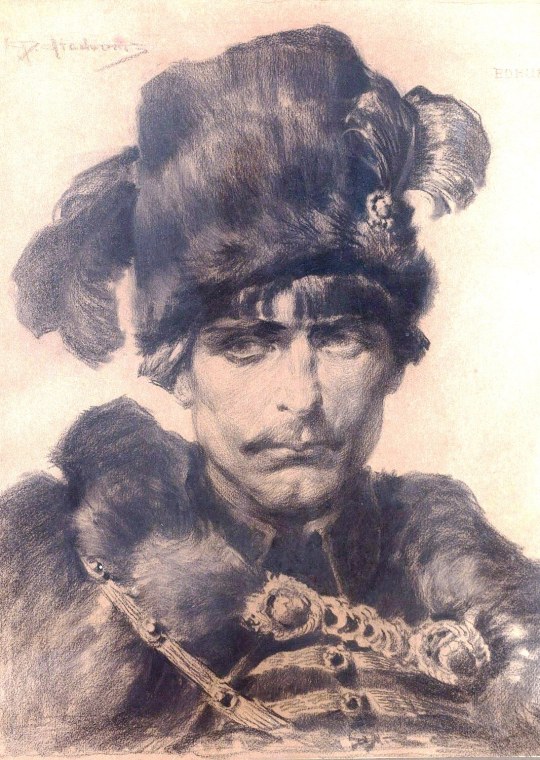
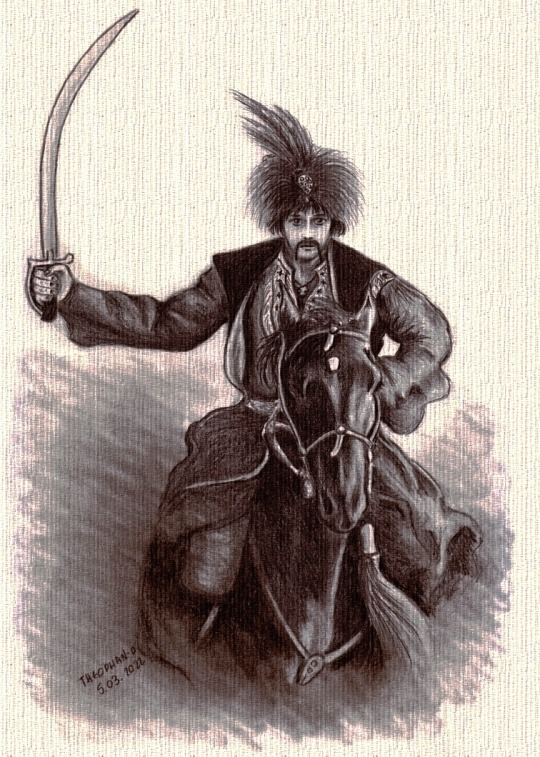
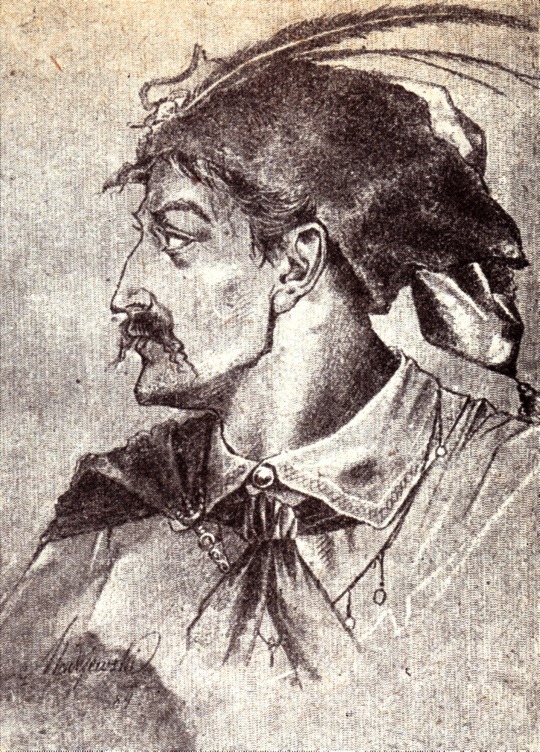
Perhaps, it is a proper moment for some summing-up reflections. I admit that I have created this blog 15.04.2020 only for fun. It was during the COVID-pandemic times, I was closed at home, recovering from a long illness. In such circumstances, some people return to their childhood fairy-tales. So I have returned to Bohun and “Ogniem i mieczem”. I was searching on the Internet for all possible groups of H. Sienkiewicz’s “Trilogy” fans, just to make friends with them, and I have found such a group here, on Tumblr and at the same time – some breathtakingly beautiful English stories about Helena, Jurko & Jan on AO3. For me, as a non-heterosexual person, their greatest value (for which I will be eternally grateful to their Authors!) was adding to my beloved “Trilogy” universe the motif of same-sex love and relationship. I wanted to contribute to it, so I have created my own Tumblr blog and an account on AO3, where I have published some from my own stories.
To be honest, the encounter with the Western “Ogniem i mieczem” fandom, seeing, how some people there perceive “Trilogy” characters, was a VERY shocking experience for me. One of these events, that are leaving you for years with a question circulating in your mind: “WHY??? What is wrong with this content, that people react to it (and to you, its admirer) in SUCH a way?” It is obvious, that H. Sienkiewicz’ “Trilogy”, created in the 19th century and telling about the historical events in the Eastern Europe from the mid-17th century, for contemporary readers can be in many aspects at least problematic (or difficult to accept). In general, it shouldn’t be, it can’t be taken uncritically now. But on the other side, it is not something worthless. Or “dirty”. Its characters (in their majority based on the real people from the past) can commit deeds viewed now as crimes, but they are still HUMANS. What is more, H. Sienkiewicz’ “Trilogy” is part of many people’s cultural heritage, entangled with countless events, heroes, myths, motifs from the Polish history (and in its first part, “Ogniem i mieczem” – also from the Ukrainian history). It is a part of MY OWN heritage and history. And I have felt uncomfortable with a thought, that in such an international community with a world-wide scope like Tumblr, someone, not having any basic knowledge about my culture/s, can think that this heritage is a “sluttish trash”. It is a reason why my blog has become “Dom Bohuna”, “Bohun’s Home”. I believe that the best way to solve such misunderstandings is spreading Knowledge and telling the Truth, so I try to show Bohun in his “natural environment”, on the one side: within H. Sienkiewicz’s “Trilogy” universe (with diverse masterpieces from the Polish culture related to it), on the other: within the Ukrainian tradition of Cossack Heroes (with various treasures of the Ukrainian culture related to it), with the Polish Romantic Cossack myth somewhere between them. I know that for a Western eye, they are all rather “distant islands”, but many parts of them are really worthy to have a closer look.
The next turning point was the February 2022. Here, no further explanation is required, I think. It was a time, when the whole our World has changed unimaginably and abruptly. And in these new circumstances, I realized one day, that I had a blog thematically related not only to the Polish literature/culture, but above all – to the Ukrainian Cossack Hero. I am deeply grateful to all my Ukrainian and Polish Friends for encouraging me to put here more content about the real Bohun and the history of the Cossack State (Hetmanate). You have given me courage. Because I hesitated, for two reasons. First: I know that I don’t have such in-depth knowledge about the Ukrainian culture, I have about the Polish one (so I can always make some hurtful mistakes). Second: I think that my blog, created for fun/fandom reasons, is not an entirely proper place for such an important content. But after all: it is a place, where one can just talk about the Ukrainian cultural heritage and turn some people's attention to it. That is why I try, as much as my limited skills and knowledge let me, to sing here about the Ukrainian Cossacks Glory. Just as Bohun himself used to do a long time ago.



#theophan-o talks#trylogia#ogniem i mieczem#with fire and sword#trylogia sienkiewicza#trylogia sensem życia#ukrainian culture#polish culture
50 notes
·
View notes
Note
Hey, I read your post about the difference between Ukrainian and russian literature, with a couple of quotes that looked really promising. Could you tell me what books or poems was quoted? And if you have the will, could you list Ukrainian literature references? I know Russian invested a lot to get their literature translated and I think it is time we make Ukrainian literature more known.
Hi! Thank you for the ask. I suppose you’re talking about this post, so here are the quotes mentioned in it, as well some links to Ukrainian literature.
“Ти знаєш, що ти людина” means “Do you know that you are human”. It’s from a poem by a Ukrainian poet Vasyl Symonenko (full English translation here). In the USSR, a human was just a screw in the system, easily replaceable. The Soviets didn’t care about individual people, only about the whole. You were supposed to die for the sake of the system if need be. And Symonenko’s poem is the opposite. It reminds us that each of us unique, that every human deserves happiness and freedom. The poet died after he was beaten up by the local militsya.
“Тварь ли я дрожащая или право я имею» is something like “Am I a trembling beast or do I have the right” is a quote from Raskolnikov, the protagonist of “Crime and Punishment” by russian writer Dostoyevsky. Raskolnikov says this as he thinks he has more rights than others and is superior to them. He divides humanity in two categories: those who have the right (who don’t need to care about laws and rules) and “trembling beasts” (who must be slaves).
“Борітеся й поборете” means “Keep fighting — you are sure to win!” It is from a poem “Caucasus” by Taras Shevchenko, the most famous Ukrainian poet. Full english translation. At the time of the writing, the russian empire was at war in the Caucasus region. Russia said that this war is actually needed to give the locals “the civilisation”, “russian laws” etc. Shevchenko gives a satirical characterisation of the empire and calls out against the war. He also encourages the locals to fight with the quote above, because “the right is on their side”.
Another writer who described the russian war in Caucasus is a famous and largely celebrated russian poet Mikhail Lermontov and his poem “Izmail Bey”. “Пускай я раб, но раб царя вселенной” - “Maybe I’m a slave, but I’m the slave of the ruler of the world”. Ah yes, the mysterious russian soul. No wonder they don’t protest.
Lermontov also wrote a poem glorifying a gang rape by the military. Here’s a video with English subtitles about Lermontov and what the hell was that poem (TW for the poem. 18+)
Ukrainian literature was always about fight for freedom, because that’s what our people always wanted more than anything. Meanwhile russian literature justifies imperialism all the time.
Links to translations of Ukrainian literature (for free!)
I am (romance) by Mykola Khvyliovyi, a psychological novel about Bolshevik revolution
Forest song (english, polish) by Lesia Ukrainka, a drama about mythological creatures in a Ukrainian forest
The city(part 1, part 2)by Valerian Pidmohylnyi, an urban novel. Recreates the atmosphere of Kyiv
Eneida by Ivan Kotliarevskyi is a parody of the classic poem where the Greek heroes are Ukrainian cossacks, describing Ukrainian customs and traditions
Zakhar Berkut by Ivan Franko is a historical novel about the struggle of ancient Carpathian communities against the Mongol invasion
Enchanted Desna by Oleksandr Dovzhenko is a cinematic novel that consists of short stories about the daily life of the author as a child in a Ukrainian village.
Tiger Trappers by Ivan Bahrianyi - a story of a political prisoner who escaped Gulag and lives in taiga with local hunters. One of my personal favourites.
Poems and stories by Ivan Franko
Contemporary Ukrainian literature in English (not for free)
What we live for, what we die for by Serhiy Zhadan - selected poems by a Ukrainian musician and poet
Apricots of Donbas by Lyuba Yakimchuk - about the East of Ukraine
The voices of Babyn Yar by Marianna Kiyanovska about the history of Babyn Yar in Kyiv
Life went on anyway by Oleg Sentsov, who was kidnapped from his home in the occupied Crimea and forced to go through a russian military trial
Fieldwork in Ukrainian sex by Oksana Zabuzhko
Also here you can buy a book “Torture camp on paradise street” by Stanislav Aseyev, who survived a russian concentration camp and described what it was like.
295 notes
·
View notes
Text
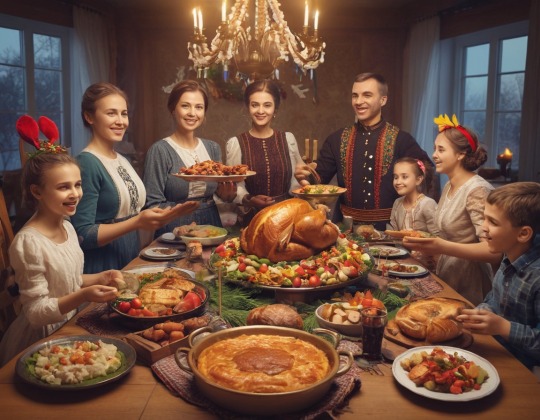
1 note
·
View note
Photo
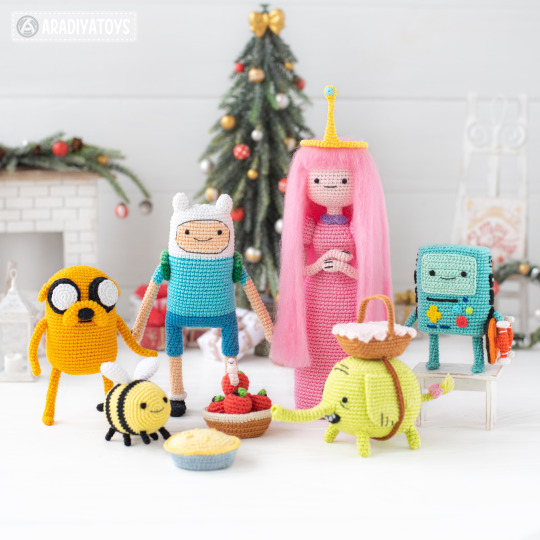



🚨[FREE PATTERNS]🚨
Merry Christmas, dear friends! 🤗
I hope you’re having an amazing Christmas Eve in a family circle this year! 🥰 Just like a previous year, you’ve been extremely supportive to me this year too and really helped me to go through very bad things in my life. This year was the most difficult in my life and it would be much more difficult without your support and cheering words, it always warms my heart to know that so many people understand what is going on and what Ukrainians live through for 10 months already. This is very devastating, but I hope next year will be much better and we will be able to celebrate our victory! 🥹 In previous two years I made a little gifts to you and to continue this Christmas tradition, there will be more gifts this year! 🎁
I’m writing this text to you today, a day earlier than I planned to post it, because we receive a very disturbing news on what may happen on Christmas Eve, as our enemy likes symbolic dates. Instead of celebrating, we’re preparing for the worst. But, to the main point!
I’m very happy to announce that my Finn the Human, Jake the Dog, BMO, Princess Bubblegum and Tree Trunks crochet patterns are available as FREE downloads in my Ravelry shop -> https://bit.ly/3ratakm 🤗
🚨It is important to remember that I do not provide support for my free patterns, but you’re welcome to create topics on any website or forum to discuss these patterns! Also, please remember that you can not post these patterns to your blog/website or make a video tutorials without my approval.
Merry Christmas and Happy New Year, dear friends! 🎄🎅🏼🎉
Olka. 💛💙
#AradiyaToys#handmade#amigurumi#crochet#olka novytska#DIY#Adventure Time#adventuretime#BMO#Finn the Human#finn#jake#princess bubblegum#tree trunks#christmas
332 notes
·
View notes
Text
🌲✨ Exploring Winter Wonders in Ukraine! ❄️🇺🇦
Did you know that Ukraine celebrates the winter holidays in a unique and magical way? Dive into the enchanting traditions with ENGin as we unveil 5 fascinating facts about Ukrainian winter festivities! 🌟






#engin#engin program#ukraine#ukraine war#volunteer#volunteer opportunities#eastern europe#україна#ukranian#russo ukrainian war#ukrainian culture#slava ukraini#christmas#world traditions#christmas around the world#ukranian traditions#geography facts#trivia
28 notes
·
View notes
Text
I regret to inform you that prejudice (of the banal traditional kind) is not inherently right-wing
I.
Karl Marx wrote:
...Let us consider the actual, worldly Jew – not the Sabbath Jew, as Bauer does, but the everyday Jew.
Let us not look for the secret of the Jew in his religion, but let us look for the secret of his religion in the real Jew.
What is the secular basis of Judaism? Practical need, self-interest. What is the worldly religion of the Jew? Huckstering. What is his worldly God? Money.
Very well then! Emancipation from huckstering and money, consequently from practical, real Judaism, would be the self-emancipation of our time.
An organization of society which would abolish the preconditions for huckstering, and therefore the possibility of huckstering, would make the Jew impossible. His religious consciousness would be dissipated like a thin haze in the real, vital air of society. On the other hand, if the Jew recognizes that this practical nature of his is futile and works to abolish it, he extricates himself from his previous development and works for human emancipation as such and turns against the supreme practical expression of human self-estrangement.
We recognize in Judaism, therefore, a general anti-social element of the present time, an element which through historical development – to which in this harmful respect the Jews have zealously contributed – has been brought to its present high level, at which it must necessarily begin to disintegrate.
In the final analysis, the emancipation of the Jews is the emancipation of mankind from Judaism...
Iosif Stalin's death, not long after his fabrication of the Doctors' Plot, spared the world from another wave of the great terror specifically against Jews. Even with him gone, discrimination against Jews remained the de facto policy of the USSR until its dissolution. And de jure policy, if one includes the fact that Soviet internal passports featured one's nationality, and Jews (except for the children of mixed marriages) were not allowed to identify as "Russian", "Ukrainian", etc.
If your definition of the ideological Left and Right does not place Karl Marx and Iosif Stalin on the left, your classification system has effectively lost all meaning.
II.
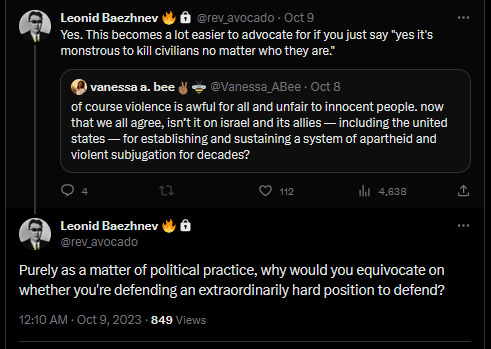
I don't want to pick on Twitter user rev_avocado (who generally writes mostly good things) in particular; this is an example of a more widespread phenomenon. I made this post now after reading the Sam Kriss essay posted by @prudencepaccard and @triviallytrue. I thought the essay was 98% excellent. The one flaw, in my view, is this one. It posits one specific psychological mechanism to explain the bad behavior of some left-wing Westerners on social media. It's not even that it cites a reason to dismiss the possibility that perhaps even a small fraction of these people genuinely don't value Jewish lives; it's that it never even considers the possibility in order to dismiss it. I suspect this is because some people just assume that prejudice against Jews is inherently right-wing. "My comrades are left-wing; ipso facto they cannot be antisemitic.”
And. It. Just. Isn't. So. [x] (Sadly, I cannot agree with Corey Robin that this is exclusive to Europe. Possibly, if he wrote that post now, he wouldn't either.)
Lest there be any confusion about the point of this post, I emphatically do not think that those like rev_avocado or Sam Kriss are themselves displaying antisemitism.
You know those polls where they asked people how common cheating in school was, and the people who themselves never cheated assumed everyone was like them, and said it was rare, while the cheaters assumed everyone was like them, and said it was near-universal? I think this explains both some of the utterly counterproductive celebrations of civilian massacres and the bafflement of the people marveling at their tactical insanity.
Again, to be as clear as possible about this, the vile people are the ones with an incorrect perception. Antisemitism is obviously much less common on the left (well, the social-democratic left; Tankies are horrible about this, but Tankies are horrible about everything) than on the right. But I would greatly appreciate it if the left-wingers who are ostensibly my friends and/or comrades would stop reflexively assuming that the number of leftists who despise me for my ethnicity is zero. It is a minority, but that is not the same thing as "it is insignificant".
35 notes
·
View notes
Text

Lily Armstrong - A 1915 Lookbook
Instead of making a lookbook for Rebecca Rubin herself, I chose one of my favorite side characters from her stories. Lillian Armstrong (née Arnovitch) comes from a family of Ukrainian immigrants. She shows Rebecca that it's possible to follow her dreams while staying true to tradition, and encourages her to stand up for what she believes in.
Lily's aspiration is World Famous Celebrity and her traits are Ambitious, Family-Oriented, and Foodie.
Hair (updated for EA swatches).
Portrait Dress*.
Off the Set Outfit: Hat, dress*.
Dressing Gown.
Coney Island Outfit: Hat, dress.
*Unable to find individual download links for Gilded's CC, but above I linked a SFS folder with all the packages. The portrait dress is named "Ravishing Rosette" "and the off the set dress is "Lofty Layered."
CC thanks to: @blueplumbbob, @gilded-ghosts, @linzlu, @simverses, @vintagesimstress, @waxesnostalgic
#sims 4 lookbook#ts4 lookbook#sims 4 historical cc#ts4 historical cc#sims 4 maxis match#ts4mm#sims 4 custom cotent#ts4cc#sims 4 decades challenge#1910s#american girl#rebecca rubin
76 notes
·
View notes